Do you want to see how easily you can attach a deck to your brick house? With the right tools and supplies, it is an easy process that can give your home a beautiful outdoor living area. Whether you are looking for something simple like a basic platform or something more decorative with latticework and railings, adding a deck to your brick house has never been easier.
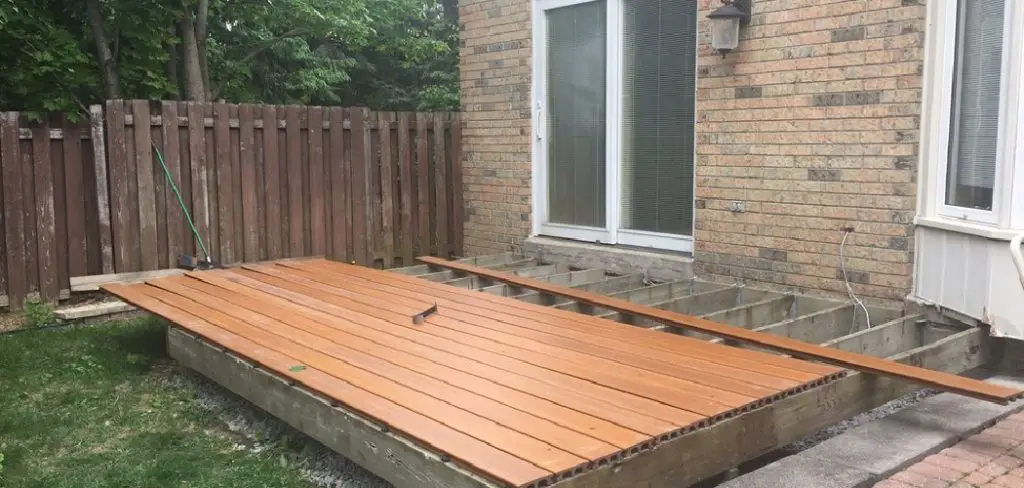
Decks are great for entertaining guests or just enjoying nature. Not to mention, they can be used to cover up major blemishes on any wall surface as well as provide extra storage space in your backyard too! With proper installation techniques and materials, attaching a deck to a brick house can be done with minimal effort.
In this blog post, we’ll go over all the steps needed for how to attach a deck to a brick house! Let’s begin!
What are the Benefits of Attaching a Deck to a Brick House?
Attaching a deck to a brick house has many benefits, including:
- Adds extra outdoor living space
- It can provide a beautiful aesthetic by covering up any blemishes on the wall surface
- Offers additional storage solutions for your backyard
- It can be used as an entertainment area for guests
- Easy to maintain and clean
What Materials Are Needed for Attaching a Deck to a Brick House?
For attaching a deck to a brick house, you’ll need the following materials:
- Pressure-treated lumber
- Galvanized lag screws or bolts
- Nails or masonry anchors
- Sealant
- Level and measuring tape
- Circular saw, or reciprocating saw
- Drill
Once you have acquired the necessary materials, you can start assembling your deck.
10 Easy Steps on How to Attach a Deck to a Brick House
Step 1. Measure:
Measure and mark the wall surface where you want to attach the deck. This will help you determine how much lumber is needed for the structure as well as how many lag screws or bolts you’ll need to secure it. If you’re unsure, measure twice and cut once.
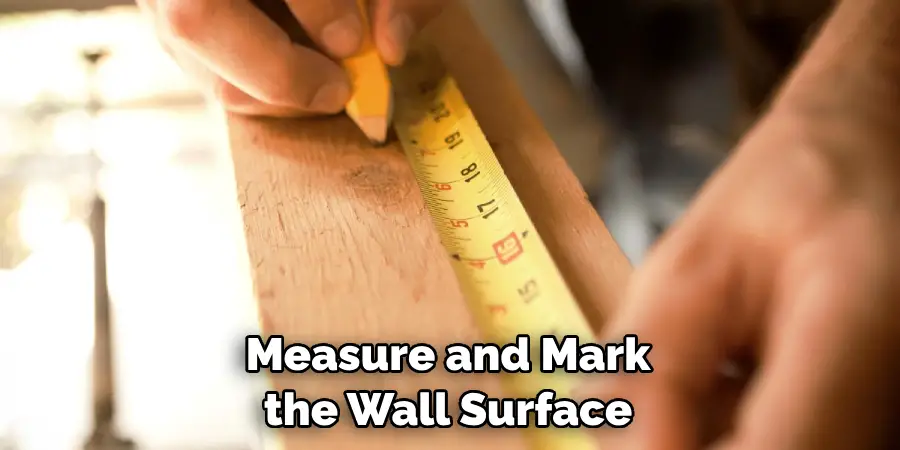
Step 2. Cut the Lumber:
Cut the pressure-treated lumber into the appropriate lengths for your deck frame using a saw. Make sure to wear protective eyewear and gloves when doing this step. Try to keep all the pieces as straight as possible.
Step 3. Attach Base Plates:
Attach base plates at each corner of the frame using galvanized lag screws or bolts. This will help provide extra support and stability to your deck structure. Try to make sure all the screws are tightened evenly.
Step 4. Mark Drill Holes:
Mark drill holes for nails or masonry anchors where necessary on the brick wall surface, ensuring they are evenly spaced apart. Then, use a drill bit that is appropriate for the size of the masonry anchors you are using. As an extra precaution, you can use a level to ensure the drill holes are perfectly straight.
Step 5. Install Masonry Anchors:
Insert the masonry anchors into each pre-marked hole using a hammer drill until flush with the brick wall surface. Then, secure them using galvanized nails or lag screws. Be careful not to over-tighten them, as this could cause damage to the wall.
Step 6. Attach Deck Frame:
Attach the deck frame to the brick wall surface by inserting lag screws or bolts through the base plate and into each masonry anchor hole. Make sure they are tightened securely. Don’t forget to check that the frame is level and even.
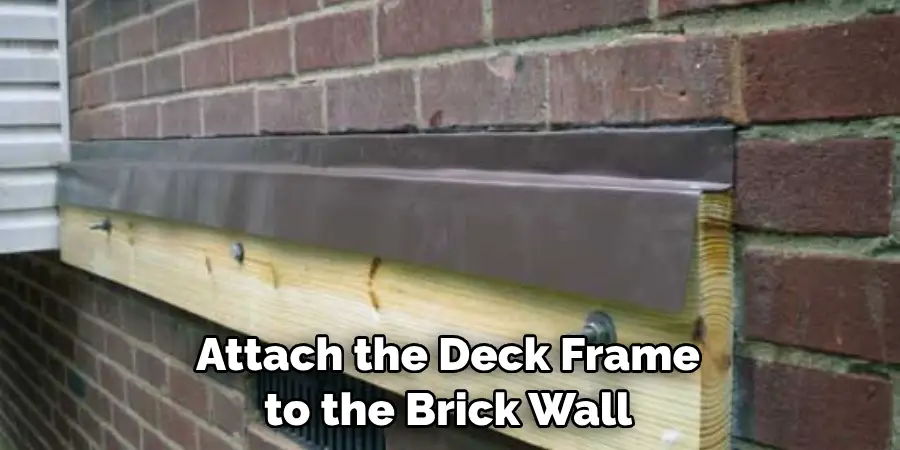
Step 7. Add Joists:
Add joists to your deck frame by attaching them with galvanized nails at every other corner and along each side of the frame (depending on the size of your deck). You can also add cross-members for extra support if needed. Adding a ledger board along the bottom of the frame will also be helpful for added stability.
Step 8. Add Decking:
Once all joists are properly secured, begin attaching the deck boards to each joist using galvanized nails or screws. Start from one end and work your way across until all deck boards are attached. If your deck is large, you can use a circular saw with a miter guide to make sure that all boards are evenly spaced apart.
Step 9. Apply Sealant:
Apply a sealant along any exposed wood surfaces for added protection against moisture and weathering elements. This will help ensure that your deck is well-protected over time. Try to use a sealant that is specifically designed for outdoor applications.
Step 10. Enjoy Your New Deck!:
Once all steps have been completed, you can enjoy your new outdoor living space! Make sure to check it regularly for any signs of wear or damage and take appropriate action when necessary. Additionally, you can add decorations or furniture to make it even more inviting.
Attaching a deck to your brick house can be done with minimal effort and simple materials.
Following the steps above will help you achieve a beautiful new outdoor living space in no time! Good luck and enjoy!
6 Additional Tips and Tricks
1. Make sure you are using the proper type of fastener for your deck. While most decks require lag bolts, brick or concrete requires specialized anchors.
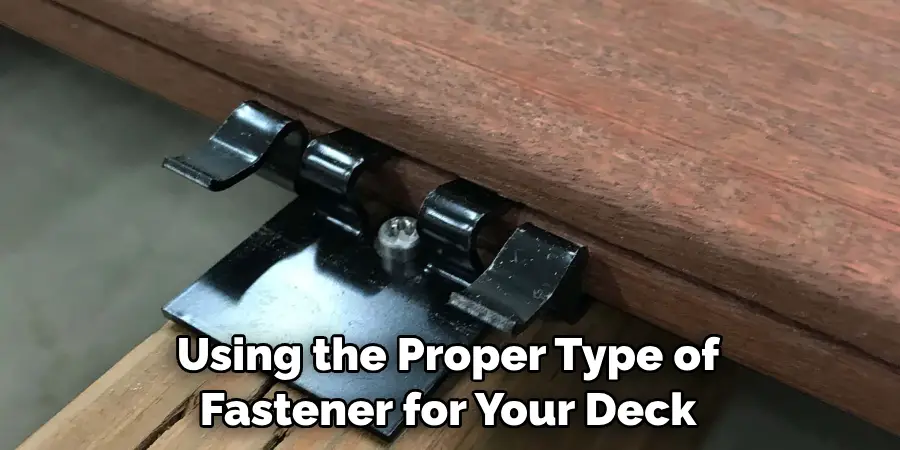
2. Plan out the support beams of the deck. You want to ensure that the weight of the deck is evenly distributed and supported by a strong foundation.
3. Use a calcium chloride test when attaching your deck to brick, as it will help you determine if moisture levels are too high in the area where you plan on drilling holes for fasteners.
4. Use galvanized or stainless steel for extra durability when attaching your deck to brick.
5. Seal any cracks or crevices around where your deck meets the brick with caulk or mortar so no water can seep into them and cause future damage.
6. Make sure to double check all measurements before beginning your project – this will save you time and money in the long run!
Follow these tips and tricks to attach a deck to a brick house successfully. Doing so will provide you with the peace of mind that your project is done correctly, efficiently, and safely.
5 Things You Should Avoid
1. Do not use regular nails, screws, or bolts to attach a deck to a brick house – specialized anchors are required for attaching wood to masonry.
2. Avoid using overly wet wood or treated with a preservative – this can cause the wood to rot more quickly when exposed to wet weather and moisture.
3. Do not fasten your deck too tightly against the brick as this can damage the material over time. Leave enough space between the two surfaces to expand and contract materials due to temperature changes.
4. Steer clear of cutting into the brick itself – unless you have experience doing so, do not try and cut out sections of bricks in order to fit your project’s needs as it could lead to further damage.
5. Do not use mortar or cement to attach your deck – these materials do not allow for any give when temperatures change, which can cause the wood to warp or crack over time.
By avoiding these common mistakes when attaching a deck to a brick house, you will be able to ensure that your project is done efficiently and safely without any potential hazards in the future.
Does Decking Need Concrete Base?
The answer to this question depends on the type of deck and the environment it’s in. Generally speaking, a concrete base is not necessary for most decks – wood can be attached directly to an existing brick house with lag bolts or anchors as long as there is no moisture present.
However, if your deck is exposed to wet weather or other harsh elements, it’s best to use a concrete base to ensure maximum durability and safety over time.
Ultimately, assessing each situation before making any decisions is important.
What is the Best Foundation for a Deck?
The best foundation for a deck is one that is stable, durable, and level. Depending on your deck’s environment, it’s important to consider factors such as moisture and temperature when choosing a foundation.
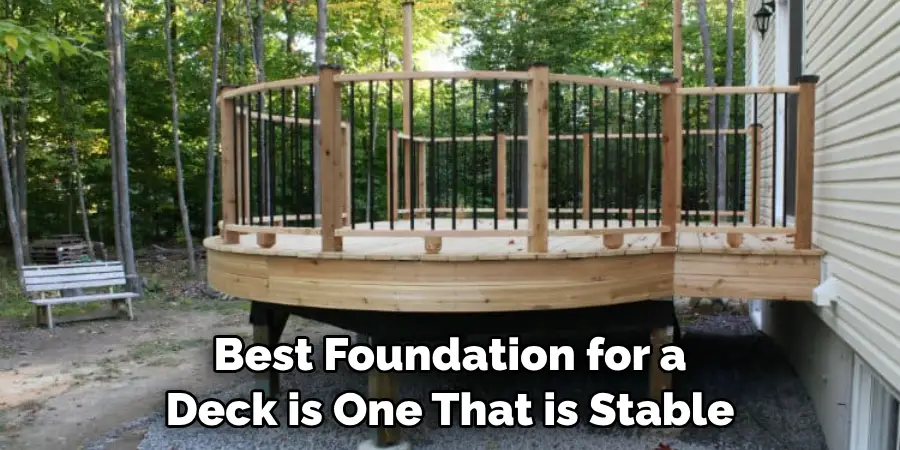
For example, concrete footings are the most common type of foundation used for decks since they provide stability and durability over time – but if you don’t have enough space or access to pour concrete footings, then piers can be an alternative solution.
No matter which option you choose, make sure to measure twice and cut once before taking any further steps! Doing so will ensure that your project is done properly and efficiently the first time around.
Conclusion
In conclusion, attaching a deck to a brick house is not impossible but requires special attention and careful instructions. There are many approaches to follow when tackling such a project, with the most popular involving mounting lag screws, using masonry anchor bolts, or epoxy adhesive and drills.
If you’re feeling extra ambitious, consider the possibility of an ornamental stone coping around the bottom of your deck; this can add extra charm and distinction to your outdoor living space.
Hopefully, the article on how to attach a deck to a brick house has provided you with the necessary insight to get started on your project. Remember, safety should always come first!
Whatever option you choose, getting professional help never hurts and will ensure your project is stable and secure for years.
So go ahead – grab some supplies, read up on tips from experts in the field, flex your DIY muscle, and get ready to create a one-of-a-kind craft item that can transform your outdoor living area into a stunning showstopper!
